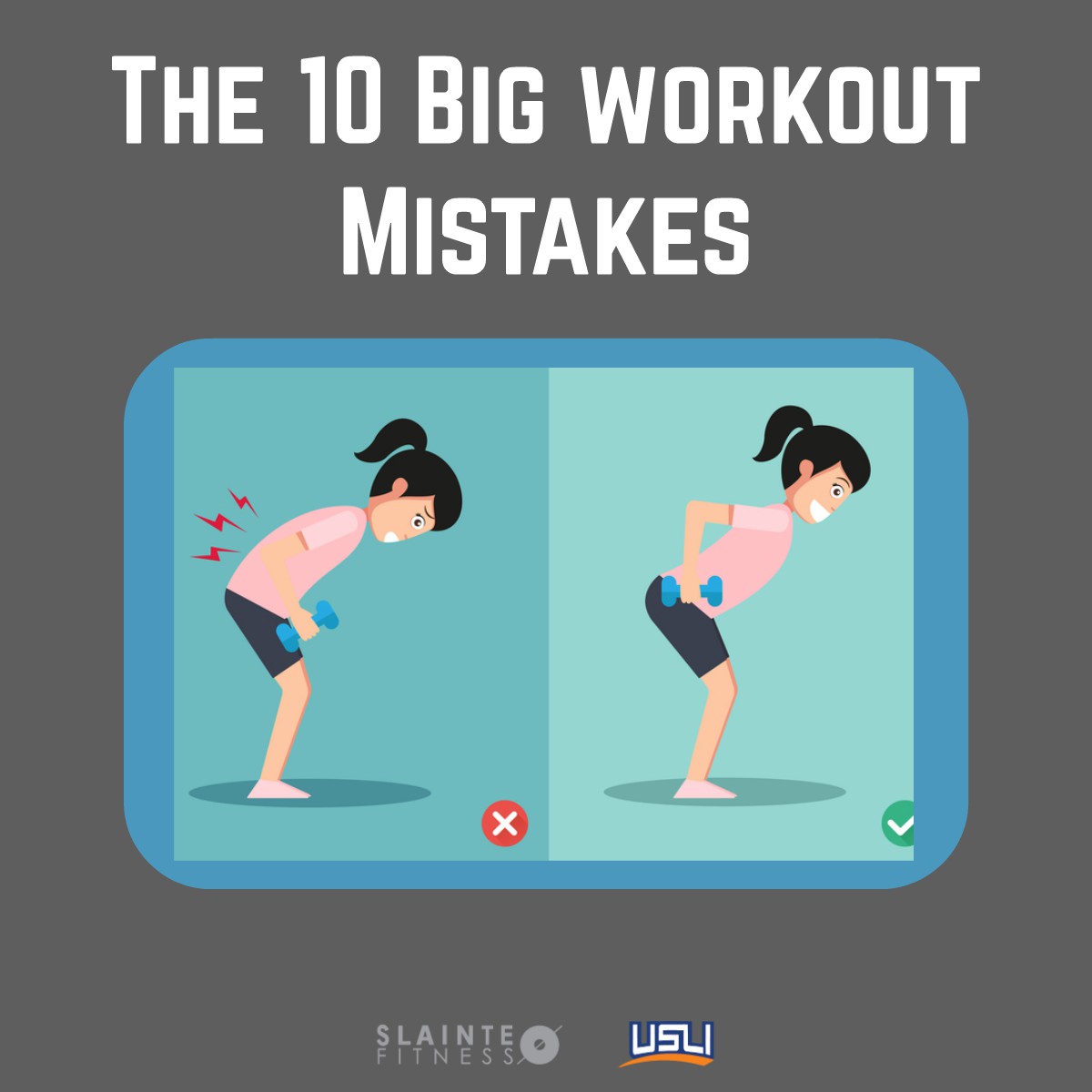Exercise provides a lot of health benefits, like improving overall mood, reducing the risk of heart disease, sleeping better and helping us live longer. However, how we perform these exercises has a great impact on achieving our fitness goals and making sure that our bodies perform at their very best. These are the 10 biggest workout mistakes and how you can fix them.
- Not having a plan of attack
Having a plan for an upcoming task or event makes us more effective at performing that task or running that event. The same concept applies when you exercise! Take the time to plan out what type of exercise you want to do each week. This will save you time in the long run and help you effectively reach your fitness goals.
- Holding your breath
Holding your breath deprives your muscles of oxygen, and, during exercise, oxygen is in high demand. This can also cause you to clench your jaw and strain your neck. Try breathing naturally to maintain a steady flow of oxygen and relax your neck. You will not only feel better, but your performance will increase as well.
- Not warming up
Imagine if you pulled a rubber band out of the freezer and tried to stretch it, what do you think would happen? Exercising with cold muscles increases the risk of strains and tears. Warming up for 5-10 minutes will increase blood flow and muscle temperature, which will help increase performance and prepare your body for movement.
- Never stretching
Like skipping the warm up, lack of flexibility increases the risk of injury to our muscles and may result in strains, tears or random aches and pains. Taking the time to actively warm up and static stretch during the cool down will increase your joint range of motion and exercise performance and will also leave you feeling fresh day in and day out.
- Only working at a high intensity
Like a machine, the body can only handle so much before it breaks down and ends up in the mechanic shop. Working at a high intensity does have benefits, but these high levels of work significantly break down muscle and result in a long recovery time. Reducing high intensity training to only a couple times per week will allow your body to recuperate and keep you on the road.
- Always doing the same thing
Like sitting in a chair 8 hours a day, the body learns posture and movement patterns that can cause tight muscles and imbalance. By switching up your routine, you challenge your body to adapt to its ever-changing environment. This will lead to more balanced movement and help avoid plateaus.
- Not taking enough days off
Muscle only strengthens during recovery, and a common error is only giving your body 24 hours to recover before the next exercise bout. Try resting 2 or 3 days in a row a few times each month and see if your performance and results increase.
- Using the back to help lift heavy weight
The back is vitally important because it houses the spine. Lifting heavy weights by arching or over rotating the back (bouncing or jerking movements) puts the spine at risk for a compression or herniation injury. It can also cause the lower back to tighten up, which can lead to misalignment, decreased activation of the glutes and nagging low back pain. A good way to help limit this risk is to keep your back stabilized by squeezing your core, use your legs as much as you can and be smart about how much weight you lift. If you have to jerk your back to help you lift the weight, then it’s too heavy!
- Lifting weights at a rapid, uncontrolled pace
Weight lifting is beneficial when performed at both slow and fast paces. However, moving weights rapidly during exercise in an uncontrolled manner (such as a bouncing, jerking or shaking movements) raises the risk for tendon pulls and joint misalignment. By lifting with more controlled movements, you will be able to isolate the primary muscle group(s) during each lift, as well as increase the stability of each involved joint.
- Working out on an empty stomach
Our body stores fuel needed to make energy. These stores are not only depleted during exercise, but also throughout the day. Working out with a depleted source of fuel decreases the effectiveness of that workout as well as increases the chances of light headedness and possible fainting. Therefore, we should strive to eat a full meal at least two hours (three is optimal) before working out to reap the full benefits. If we choose to workout first thing in the morning, then consuming simple carbohydrates at least 45 minutes prior to training will help kick our body into gear. For help on proper proportion sizes and healthy foods options, check out this resource.

